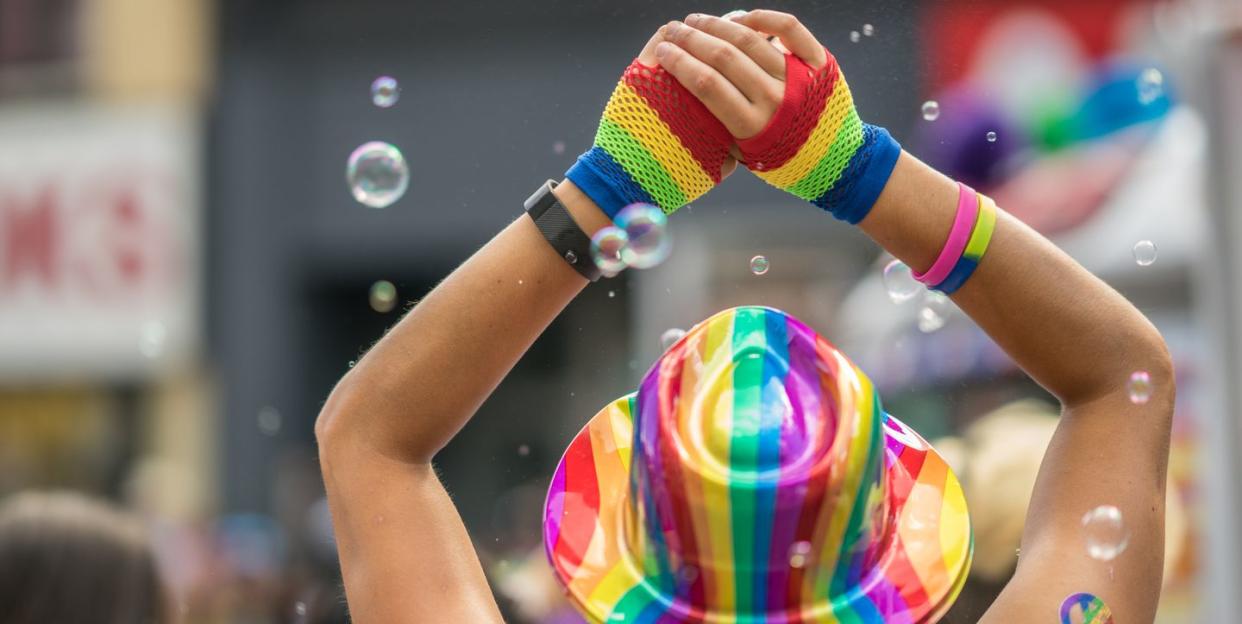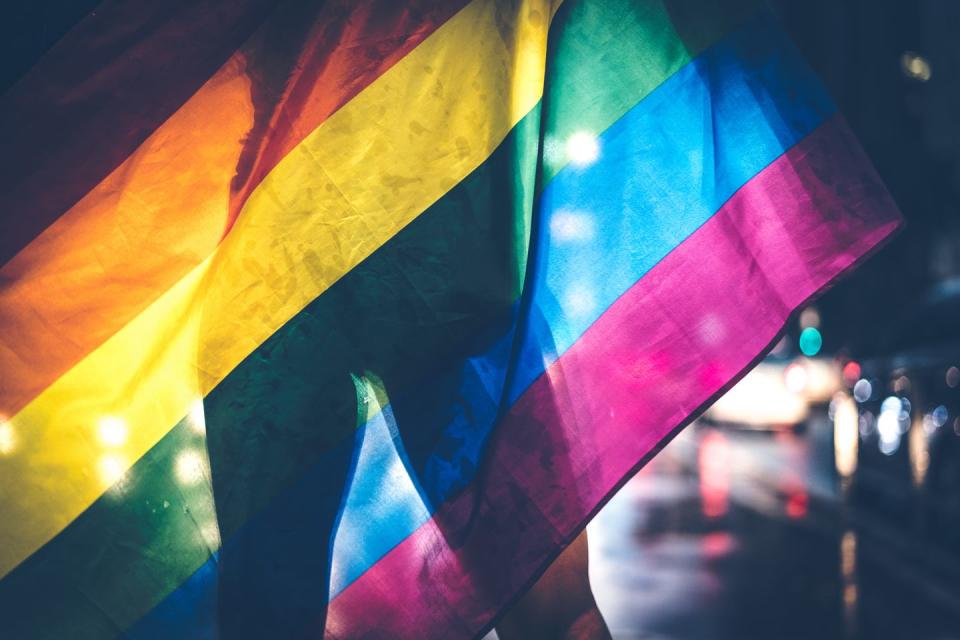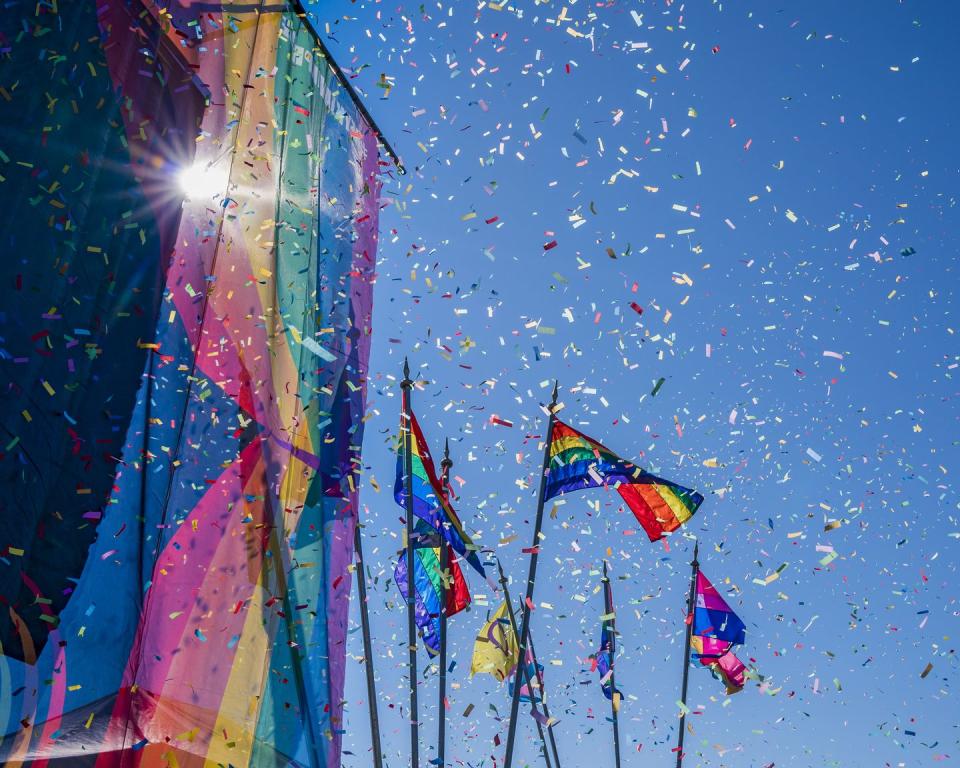What is Pride Month? Everything You Need to Know About the 50th Anniversary of Stonewall

“We’re here, we’re queer, get over it!” You may have heard the chants, seen the rainbow flags, maybe even watched a parade go by, but the roots of pride month go much deeper than colorful costumes and rainbow-plastered parties. Formally called Lesbian, Gay, Bisexual, Transgender and Queer Pride Month, each June the LGBTQ community celebrates the right to live as their true selves, while recognizing those who don’t yet have that freedom, and commemorate the decades-long struggle of LGBTQ people to be recognized as full and equal citizens.
The original organizers instituted pride month, sometimes also called gay pride month or LGBT pride month, to remember the Stonewall riots that took place in New York City in 1969, which also helped spark the modern LGBT movement. While many pride celebrations today include parades, parties, and wearing rainbow attire from head to toe, it’s important not to forget the meaning behind the festivities.

Who celebrates pride month?
While the celebration has become more mainstream in recent years, pride month is traditionally celebrated by members of the LGBT community. That includes people who identify as lesbian, gay, bisexual, and transgender, as well as their allies. While the term sounds all-encompassing, it’s often extended to include queer (or people who identify as non-heterosexual); intersex, or those whose sex is not clearly defined due to hormonal, genetic, or biological differences; and asexual, or people who don’t experience sexual attraction.
The acronym can extend even further to include gender-fluid people, or those whose gender identification or expression changes, as well as a range of other identities. An ally is anyone who supports someone who identifies as LGBTQ; many heterosexual or straight people who celebrate pride consider themselves allies.
When did the pride movement begin?
Pride has its roots in one fateful day in June, when LGBTQ people still largely kept their identities a secret. Early in the morning on June 28, 1969, police raided Stonewall Inn, a longstanding gay bar in New York’s Greenwich Village. At the time, LGBTQ people were still often widely persecuted under state sodomy laws, and the cops began hauling customers out of the bar. Some of the patrons began resisting arrest, and the clash quickly escalated as tensions rose. Bystanders began throwing bottles at the officers, and a riot broke out that ultimately lasted three days. For the first time, people who hadn’t previously been involved in LGBTQ rights activism stood up against persecution.

How did modern pride celebrations get started?
The Stonewall riots turned into a catalyst for the LGBT rights movement, which in many ways resembled the Civil Rights Movement and the Women’s Rights Movement. The movement launched organizations such as the Gay Liberation Front and the Gay Activists Alliance, which held protests, met with political leaders, and disrupted public meetings and events to hold leadership accountable.
One year after the Stonewall riots, the nation's first Gay Pride marches were held. Brenda Howard, a bisexual New York activist nicknamed the "Mother of Pride," organized the first pride parade to commemorate the one-year anniversary of the Stonewall riots. In 2016 the area around the Stonewall Inn, still a popular destination for the LGBT community, was designated a national monument.
Learn how YOU can celebrate pride month...
Today, pride month is more than just a party. It’s also a great time to recognize how far the LGBT community has come. Many cities both across the United States and the world hold parades on the last Saturday in June, but others host pride parties, festivals, foot races, and fundraisers that go on all month long. Because 2019 marks the 50thanniversary since the Stonewall Uprising, many events will be even bigger and better than ever.

The beauty of pride is that anyone can participate, whether or not you consider yourself part of the LGBTQ community. It’s a great time to celebrate your LGBTQ family members, friends, or coworkers, donate to LGBT charities, or educate yourself about the LGBTQ aspects of the diversity that makes our society beautiful.
You Might Also Like

